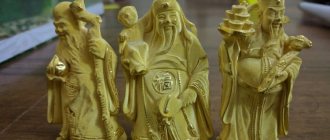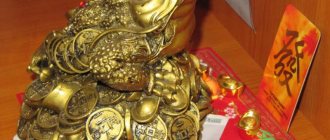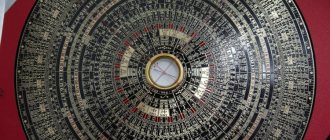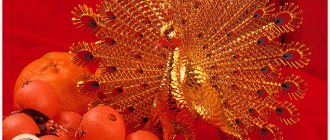| How big mill In some systems, the circling of the fixed stars around the celestial pole, connected to the center of the earth through a transparent (crystal) axis of the world, is perceived. It is in a symbolic connection with the concept of cyclical world eras. The leveling effect of the justice of fate, which grinds all the grains. Shares symbolism:
Represents harvest and fertility. | See also: Tools Millstone Mundus Navel Cosmogram |
Slavs
An object and locus endowed with demonic properties in folk beliefs. The combination of natural and cultural principles in the mill, the transformation of one substance into another, the use of the power of the elements (water, wind), as well as constant noise - all this determines the attitude towards the mill as a diabolical invention.
A mill, especially a water mill, as well as an abandoned and ruined one, is the habitat of mythological characters. They believe that a waterman lives under the mill wheel, a mermaid washes her hair in the mill, devils sit on the pillars of the destroyed mill, and a vampire lives on the roof. They try to avoid empty mills: the Karakonjuls celebrate weddings there and can drag a passerby to their place. The devil lures a peasant to the mill, grinds flour for him for free, but mixes it with sand, etc. Weasel, a demon animal, is also associated with the mill; the Bulgarians even call it the “mill cat” (vodenichno kote). If she gets into the habit of climbing into the chicken coop, special spell formulas are used to send her to the mill.
A miller, according to popular belief, must be acquainted with evil spirits, especially the water spirit[1].
The parts of the mill (wheel, millstone, skate, stone, etc.) due to their specific functions receive stable symbolic meanings and are often used in various rituals. Thus, you can protect livestock from death during an epidemic by burying a mill dam stolen at midnight in the gate. The rotating wheel of a mill can turn the course of the disease, so, for example, water that was used to wash the patient is poured onto it. It is also used in love magic[2]. Speed and efficiency are associated with the constant movement of the wheel; it is on it that the girl’s first independent yarn is placed by her father, with the wish that his daughter’s work will be successful. Added to the magical properties of the mill and its parts is the purifying power of water that comes into contact with the mill. During difficult births, in order for the baby to be born faster, the woman in labor is sprayed with water from a wheel. Young people also washed themselves with this water on St. George’s Day in order to be agile and healthy all year round. It was believed that damage could be removed from a person by throwing his clothes into the water under the mill.
A mill, regardless of its type (wind, water, hand) in Slavic languages is one of the most archaic and persistent metaphors for speaking and talkativeness [3]. The same metaphor serves to interpret dreams: a miller in a dream means a quarrel, an empty mill means useless conversations. Magical actions (mainly with the rattle of a mill) are based on the correlation between the mill and speech, aimed at making the child begin to speak.
In numerous Slavic proverbs, the work of the Mill and its parts is correlated with the speech apparatus [4].
The mill and millstones in riddles are indicated by the noise effect:
- rus.
“Tah-tara-rah, there is a house on the mountains”; - Bulgarian
“A mad dog barks in the village”, etc.
Fairy tales tell of a miracle mill that grinds itself, winnows itself, etc. The construction of a mill is one of the tasks that the bride gives to the groom. In fairy tales about the stepdaughter, in legends about saints, the mill is one of the loci where the action takes place.
The Eastern Slavs are famous for the Yuletide games of mummers “Devil's Mill”, where the host is a bear or the devil. Western Slavs, Croats and Slovenes set up a “mill” at Maslenitsa, “remaking” old men and women into young people.
The mill as an allegory
Perhaps the “mill of time” is something that inexorably absorbs the past, present and future, turning it into small grains, dust, making people insignificant before the very essence of existence. “The mill of time” is certainly a concept with a deep figurative meaning. For a particular person, it represents something that indicates the vanity of his life, the insignificance of petty passions and desires.
The mill of time is able to grind all the sorrows and grievances, mix together the sorrows and joys that a person has ever thought and experienced, and at the output give a result, a certain personality, as a product of all the events experienced in the past and present. The mill is a kind of arbiter of destinies, which mixes everything and everyone, regardless of persons and positions.
The mill, as the basis of the metaphor, was not taken by chance. After all, this is a grandiose structure, which is sometimes quite difficult to stop, much less reverse. She can only move forward, destroying literally everything in her path, completely unaware of what hits her. As a rule, such structures stand for centuries, being involuntary witnesses of many generations of people, tragic and happy events.
Christianity
The symbolism of the Middle Ages knew the picture of a “mystical mill” into which the prophet Isaiah pours the grain of the Old Testament, and the Apostle Paul picks up the flour of the New Testament. In some images:
- the four evangelists pour grains,
- the apostles set the rivers in motion at the mill wheel,
- community leaders take flour,
- Jesus distributes the baked hosts among the believers.
Christ himself is the bread of life.
A windmill, along with scales, can symbolize humility.
DIY windmill amulet
Talisman Mill
Magicians make such a talisman to order from crystal. This helps to retain the energy inside the stone longer. Any homemade amulet quickly wears out and requires either updating or replacement. If you can’t buy a ready-made amulet, you can make it yourself. This will energize the owner and tune in to his energy.
The easiest way is to make a talisman for a wallet. The simplest thing is to draw on paper with a pen. You can spend a little more effort.
- Using a compass or pattern, draw a circle on the cardboard that will become the base.
- Cover it with white paper if the cardboard is dark.
- Paint the blank with red or gold paint. These are traditional money colors.
- Place a sign on the circle. For a red field - green, for a gold field - black. This is the most crucial moment. Runes must be drawn as clearly as possible. Any wrong line will distort the meaning. It is better to print the finished image and translate it in any way. For example, through translation.
- For strength, the product is varnished.
It is better to do work when the moon is in its waxing phase or during the full moon. These cycles are associated with multiplication. For the effectiveness of the amulet, when making the amulet, do not be distracted and do not allow extraneous thoughts. You need to engage in visualization and communication with the talisman. The right mood plunges the consciousness into a kind of trance.
There are opinions that the image itself has power, so wherever it is: on clothes, on skin, on personal belongings, the mill will help in attracting money. This is wrong. The talisman starts the movement, unwinding it. Without ritual, the talisman will become meaningless. The talisman must be perfectly round. The material doesn't matter. Stone holds energy longer than wood or paper, but it also wears out. Maximum service life is five months. Old amulets are not thrown away, but kept at home.
Illustrations
- Mill, sickle and plow. From Boccaccio's incunabula. Ulm. 1473
- Mill and plow. Drawing in the margins. Eike von Repgow. Saxon mirror, ca. 1230
- Wed. rus.
Siberia miller - water miller. - Compare: “As quickly as the wheel turns, so let N.’s thoughts about me spin in my head” (Bulgarian)
- Wed. grind your tongue, grind nonsense; rus.
dial _ miller - “chatterbox”, etc. - Wed. rus. “The tongue is a millstone without rolls”, “The tongue is a millstone, it grinds whatever happens to it”, etc.
- Wed. rus.
Money mill symbol outline
Mill
This is a rune talisman for attracting money. There is no consensus about its origin. It is classified either as Saxon or Scandinavian culture. The symbol is called a money snowflake, a crystal amulet. It is mistakenly called Grotti's millstone, but this is a different symbol.
The mill contains four runes. Each is responsible for increasing the amount of money:
- Establishing a framework for cash flow. This helps you get rid of debts and not accumulate them anymore. The sign will not allow negative energy to take over the owner’s mind. This is especially important for those who like to receive everything immediately, which results in debts and loans. This is the appearance of well-being. You can drive a top model car and carry a fancy phone in your pocket and give your entire salary to the bank, and spend the whole month sadly thinking about food. The described part of the mill will eliminate such behavior.
- Empowering the mill with harvest energy. This is a common sign in any culture, since in ancient times the harvest enriched and brought prosperity. All known magical powers were called upon to increase the fertility of the earth and pacify the elements.
- Profit sign. With him, any business becomes successful and brings increased wealth.
- Rune Fehu. It goes from the center in all directions, which allows you to receive money from all sources, even unexpected ones.
The mill will not bring a ready-made bundle of banknotes. In any case, you will have to work for the appearance of money, but luck and cash energy flows will be directed to the owner of the mill.
Windy region
The windmill is a visual symbol of Holland. Anyone who comes to this country is sure to see mills everywhere. Photographers near them are exhausting kilometers of film.
The mill is both a monument of antiquity, a trademark, and an example of combining functionality with beauty, a poetic sign of the unity of man and nature. Unlike factory chimneys, mills do not pollute the air; the beauty of the landscape only benefits from them.
Water and windmills were invented in search of power that could help a person in everyday affairs. It is believed that windmills first appeared in southern Europe (presumably in Greece) and quickly spread everywhere. At first they were brick structures that looked like huge barrels with wings. A famous literary hero fought with such mills in Spain. In France, I saw the same antiquity in Provence near Nice. The writer Prosper Merimee retired for his labors to the mill, which has now become a museum; it is shown to tourists as a national treasure. I saw two more “barrel” windmills in the center of France. This is all that remains here of the once numerous flour milling buildings. Four of the oldest mills have survived in Holland. They look awkward next to the light, tall, graceful windmills of “Dutch architecture”. Brick buildings were abandoned almost everywhere here due to the softness of the soil - heavy windmills were lopsided and fell. The Dutch began to build wooden mills on solid foundations. And often only the frame was made of logs, and the sides and movable “cap” of the mill were covered with neatly trimmed reeds, which were everywhere at hand. It seems that the masters were competing to see whose mill would be more beautiful. The structures for prosaic work have elegant shapes, considerable height and resemble land ships. The wind makes their light wings, equipped with canvas sails, work.
Thanks to the constant winds on the local coastal plains, mills, at one time, filled the country, producing a variety of different works. And to this day you can see a flour mill, a sawmill, a wool mill, and an oil extractor from flax and burdock seeds. Mills ground wood for paper production, crushed oak bark used in leather production, and ground spices brought by ships from the East. But the main purpose of wind turbines was to pump water from low-lying areas. Ninety percent of all mills were occupied with this work. Their wings spun day and night.
The design of the mills was continuously improved. It is believed that the first windmill in Holland appeared in 1260, and the peak number of mills occurred in the 17th century - nine thousand! In an old painting (I counted it on purpose), 27 mills came into the artist’s field of vision at once. The silhouette of Amsterdam in those years was defined by mills. Holland owes them the emergence of industrial zones in different places.
With the advent of steam and electricity, the demand for wind power dropped sharply, and mills gradually disappeared everywhere. But not in Holland! Here they became part of history, culture, aesthetics. To this day, a thousand mills have not only been preserved, but are maintained in working order. And some do work - grinding grain, sawing wood. All together they represent historical value, preserved only here in Holland.
The surname Melnikov is the most common in the world after the surname Kuznetsov. We were shown a place near Rotterdam where ten generations of millers lived, passing on to their descendants the ability to operate windmills. Now there are no professional millers. But “mill unions” have been created everywhere. Their members maintain order in the mills, repair windmills, and monitor their working condition. Here and there at the mill you can buy “wind-milled” flour, postcards, souvenir books...
Maxim Sinitsyn and I visited a sawmill and flour mill in the town of Utrecht. These structures, the height of a three-story house, were built to rise above the city - to “catch the wind.”
These two-tiered buildings have a belt with railings around their circumference, on which you can climb and look at the open flat landscape everywhere, but most importantly, penetrating “from the porch” into the inside of the windmill, you can see how its powerful, far from simple, mechanism works.
In a good wind (and in Holland it is always good!) the “royal” vertical shaft of the mill rotates at a speed of 120 rpm. Excess wind pressure can be removed by reducing the canvas windage of the wings, or levers can be used to activate wooden brake pads, which work on the same principle as a brake in a car. But care must be taken to ensure that the wood does not overheat due to friction and that a fire does not occur. To prevent this, lubricant is used. It is used as internal lard. Pieces of it hang under the roof of every windmill.
To operate, the wings of the mill must be turned towards the wind. In some designs, the entire body of the building rotates, in others, only the “cap” of the mill, which carries a shaft on which the wings are attached. The mill control system has been brought to the precision of a clock mechanism. There are levers, pedals and something like a steering wheel on a ship. The centuries-old experience of installing the wings in the desired position has even developed a peculiar language with which the millers communicate something to each other and to everyone who sees the mill. When installing the wings in one way or another, you can say: “I’m away, but I’ll be back soon,” “The mill is temporarily not working.” The special position of the wings announces mourning in the miller’s house or, on the contrary, some kind of celebration. During the war, by using the position of their wings, the millers transmitted important information to the English pilots with a pre-agreed signal, and informed the anti-fascist Resistance about possible raids. And during the national “Festival of Mills”, on the second Saturday of May, as they say, “everything that can spin turns.”
Looking at the map, you will notice: a thousand windmills marked with icons are scattered throughout the space of a small lowland state. But there are places where the icons are drawn together. Near Rotterdam, an “association” of nineteen mills has been preserved. The sight of them standing near the canal is amazingly beautiful. Once upon a time they drained the lowlands by supplying water through a stepped chain into the main canal. Now water is pumped out everywhere with electric pumps, and the mills stand idle. But they are all in perfect order and continue to serve Holland, attracting a lot of tourists. And yet, it is expensive for the state to maintain a thousand windmills, and all this unique mill industry (there are also 80 water mills here in the south) was transferred by Holland to the World Cultural Heritage Fund.
They are now trying to use the winds in Holland to generate new energy. Everywhere, especially in the north of the country, you constantly see rows of tall concrete towers on which three-bladed electricity generators are raised high. They are also called mills here. In one line, I counted one and a half hundred “mills” stretching beyond the horizon. Wind energy is environmentally friendly, but “towers” are expensive, and “wind electricity” makes up only two percent of all that various types of power plants provide. Objective: reach seven percent.
We said goodbye to Holland, traveling to the airport by train. On both sides of the road one could see villages, sometimes with a bell tower, sometimes with mills, the rotation of their wings saying “Goodbye!” to some, and “Hello!” to others.










